 |
DATA TYPES & OPERATORS |
| << Software Design and Development Methodologies |
| SPREADSHEETS >> |
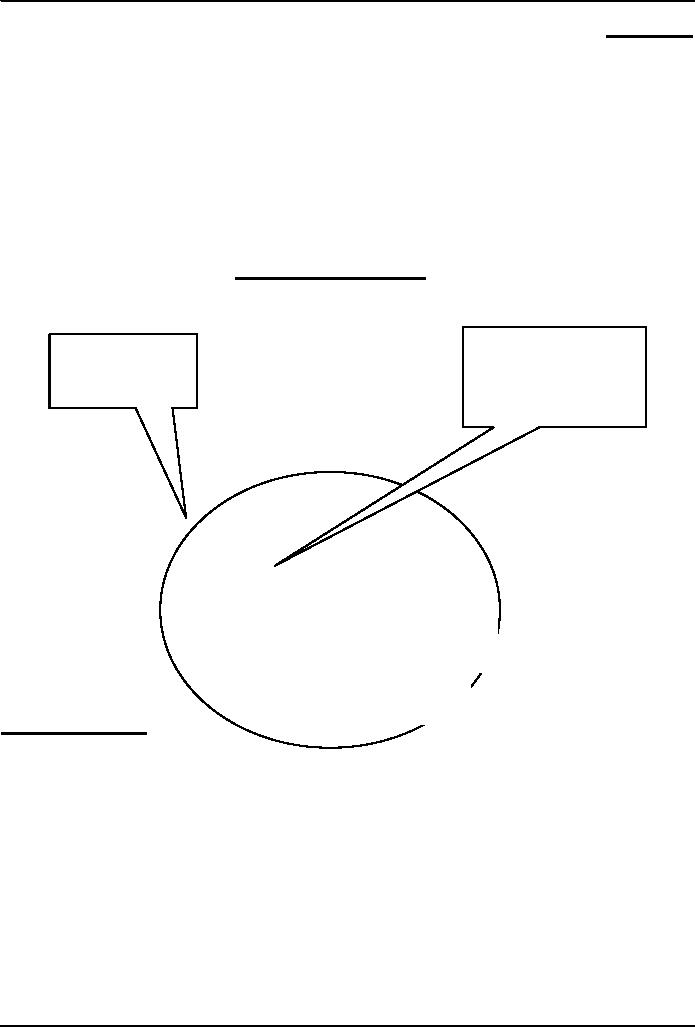
Introduction
to Computing CS101
VU
LESSON
21
DATA
TYPES & OPERATORS
(Web
Development Lesson 7)
�
Everything
that JavaScript manipulates, it treats as an
object
e.g. a
window or a button
�
An
object has properties
e.g. a
window has size, position,
status, etc.
�
An
object can be manipulated
with methods
that
are associated with that
object
e.g. a
resize a
window
with resizeTo(150,
200)
Object: A
named
collection
of properties (data, state) & methods
(instructions, behavior)
During
the last lecture
we had a
discussion on Objects, Properties,
Methods
All
objects have the
A collection
of
"name"
property: it
properties
&
holds the
name of
methods
the object
(collection)
name
prop
1
method
2
prop
2
prop
5
prop
3
method
1
method
3
prop
4
Types of
Objects
�
JavaScript
objects
Objects
that are part of
JavaScript
Examples:
window, document
�
Browser
objects
Objects
that contain info not
about
the contents of the display, but the
browser itself
Examples:
history, navigator
�
User-defined
object
�
JavaScript
is not a true object-oriented language
like C++ or Java
�
It is so
because it lacks two key
features:
A
formal inheritance mechanism
Strong
typing
132
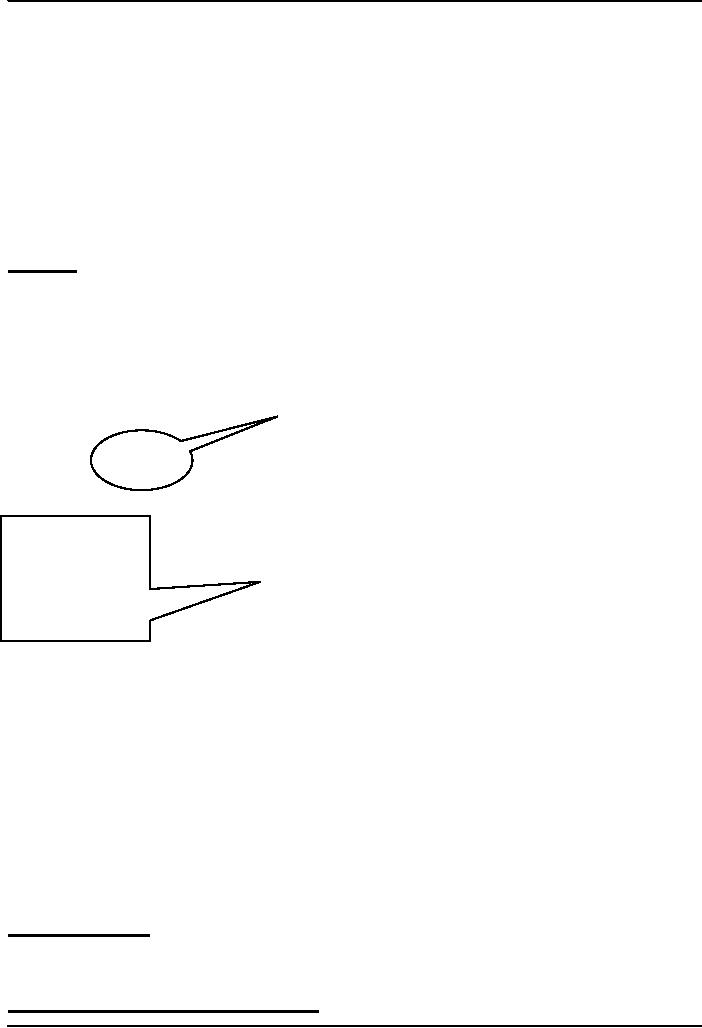
Introduction
to Computing CS101
VU
�
Nevertheless,
JavaScript shares many
similarities with object-oriented
languages, and therefore is
called
an object-based language
21.1
JavaScript Data Types
Unlike
in C, C++ and Java, there
are no explicit data types in
JavaScript
Nevertheless, it
recognizes & distinguishes among the following
types of values:
Numbers,
e.g.,
23, 4.3, -230,
4.4e-24
Booleans,
e.g.,
true, false
Strings,
e.g., "hello", "What's the
time?"
Undefined
We'll
comeback to these data types,
but before that we have to have to
define a few new
terms
First,
variables:
Variables
Variables
give us the ability to manipulate
data through reference instead of actual
value.
Variables
are names assigned to
values.
Variables
are containers that hold values
(Example: Hotel guest name,
Guest room no).
Generally,
the value of a variable varies during
code execution (that is why
the term "variable.
x = 1;
Example
while (x < 6)
{
document.write
(x);
x = x + 1;
}
x is a
variable
Try
Doing the Same Without Using
A Variable
5 lines of
code
replacing 5
lines
document.write
("1"); document.write ("2");
of
code!
document.write
("3"); document.write ("4");
document.write
("5");
Why
use
variables?
Another
Situation
x =
1;
while
(x < 6000) {
document.write
(x);
x = x +
1;
}
21.2
Declaring
Variables
Many
languages require that a
variable be declared (defined) before it
is first used
Although
JavaScript allows variable declaration,
it does not require it - except in the
case when we want
to declare a
variable being local (more on
local variables later in the
course!)
However,
it is good programming practice to declare
variables before using
them
Declaring
Variables
var
height
var
name, address,
phoneNumber
JavaScript
Variables are Dynamically
Typed
133
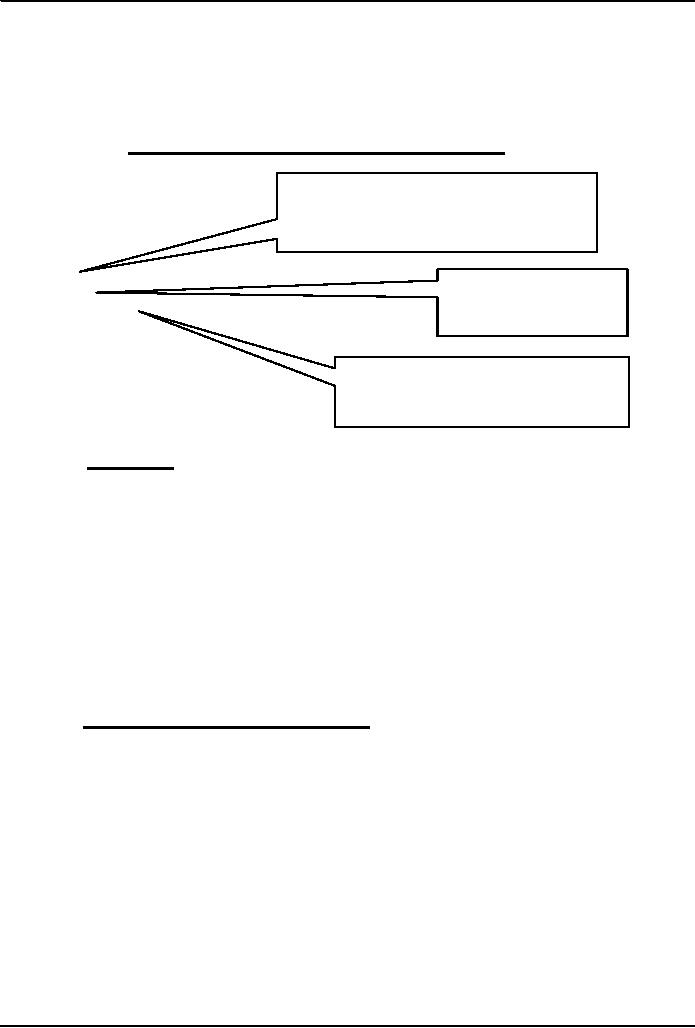
Introduction
to Computing CS101
VU
Any
variable in JavaScript can hold
any type of value, and
that type can change
midway through the
program.
This
is unlike the case for C,
C++ and Java, where a
variable's type is defined
before usage.
The
untyped feature makes JavaScript
simpler to program in when
developing short programs.
However,
this feature brings in a few
problems as well. Can you
describe any?
JavaScript
Variables are Dynamically
Typed
After the
execution of the 1st
statement,
the data type of the
variable
"sum" is
"undefined"
var sum
;
After the
execution of
sum = 43
;
the 2nd
statement,
sum =
"empty" ;
the data
type
After the
execution of the 3rd
statement,
the data type changes
to
"string"
Identifiers
� Identifiers
are names used by JavaScript
to refer to variables (as
well as objects,
properties,
methods, and functions!)
�
An identifier must
begin with an alphabetical
character (a-z or A-Z) or
the
underscore
"_" character
�
Subsequent
characters can be an alphabetical
(a-z or A-B) or numeric character
(0-9)
or an
underscore
numberOneUniversity
,N99umber_one_University
_5numberoneuniversity,x,reallyReallyLongIndentifier12345678901234
Another
Restriction on Identifiers
�
Do not
use any of the JavaScript
keywords as identifiers
�
For
example, do not name a variable as
"while". When the browser
sees this term in
JavaScript
code, it will get confused
as it already knows this keyword as
part of a loop
statement.
Same is the case for "var"
or "if" or any of the other
keywords.
JavaScript
(Java) Reserved
Words
Names
that can't be used for
variables, functions, methods,
objects
Identifiers
Identifiers
are names used by JavaScript to
refer to variables (as well
as objects, properties, methods,
and
functions!)
An
identifier must begin with
an alphabetical character (a-z or
A-Z) or the underscore "_"
character
Subsequent
characters can be an alphabetical
(a-z or A-B) or numeric
character (0-9) or an
underscore
numberOneUniversity
,N99umber_one_University
134
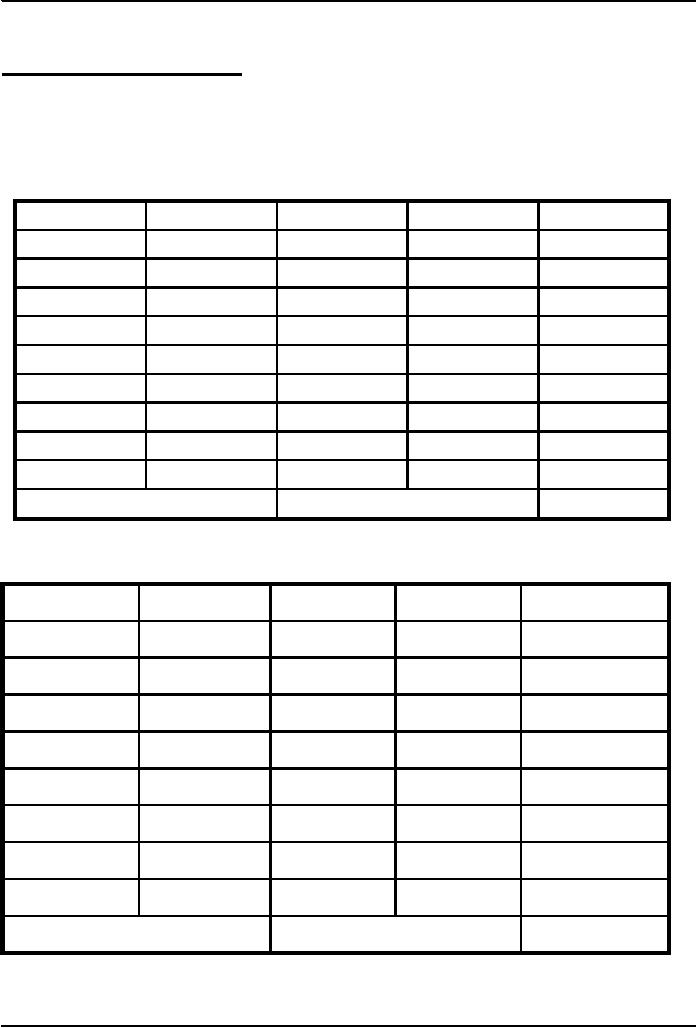
Introduction
to Computing CS101
VU
_5numberoneuniversity,x,reallyReallyLongIndentifier12345678901234
Another
Restriction on Identifiers
Do
not use any of the JavaScript
keywords as identifiers
For
example, do not name a
variable as "while". When the browser
sees this term in JavaScript
code, it
will
get confused as it already knows this
keyword as part of a loop
statement. Same is the case
for
"var"
or "if" or any of the other
keywords.
JavaScript
(Java) Reserved
Words
Names
that can't be used for
variables, functions, methods,
objects
finally
byte
import
throws
finally
else
protected
goto
with
default
new
abstract
static
class
interface
var
float
case
in
transient
extends
if
this
public
do
null
Boolean
super
long
void
const
instanceof
false
for
catch
true
return
private
package
double
throw
while
native
break
switch
continue
function
char
int
try
final
????
synchronized
implements
Avoid
These Special Names As Well
(1)
Names
that should not be used for
variables, functions, methods,
objects
close
confirm
assign
Window
JavaClass
History
Image
Form
java
onfocus
navigator
Number
location
onblur
Select
prompt
Radio
Packages
Reset
Element
unescape
valueOf
sun
window
JavaObject
closed
Date
blur
Document
onload
history
isNaN
Frame
JavaArray
Self
netscape
Object
Math
onerror
untaint
prototype
ref
parent
scroll
taint
defaultStatus
clearTimeout
document
135
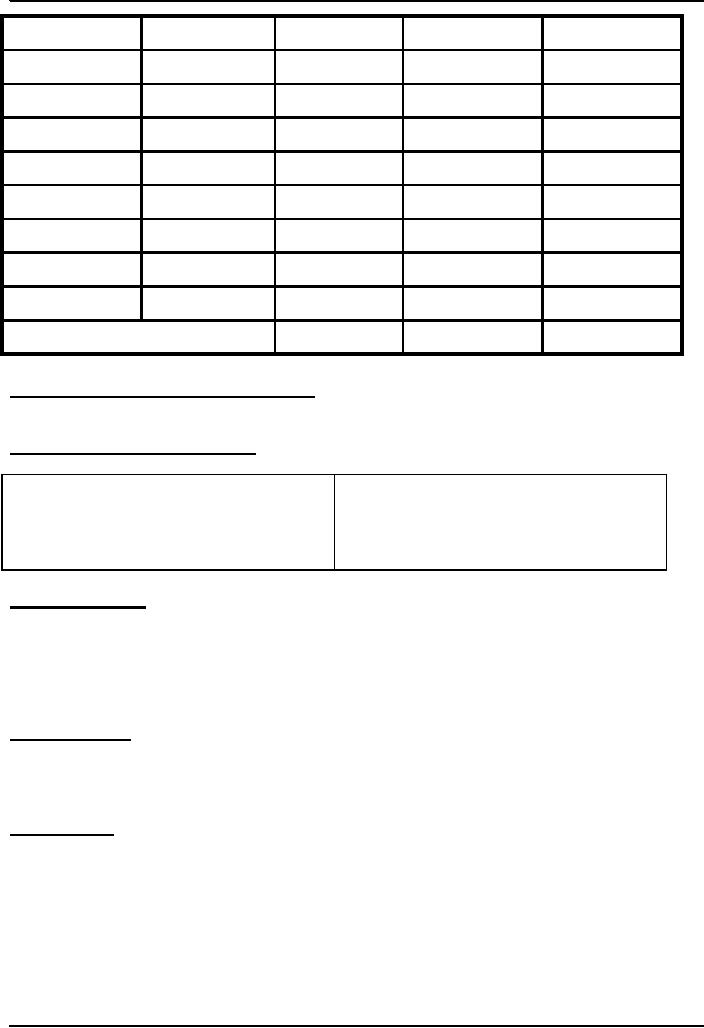
Introduction
to Computing CS101
VU
alert
Area
assign
Boolean
Checkbox
escape
FileUpload
Form
frames
getClass
status
Link
location
MimeType
navigate
onunload
opener
Packages
parseFloat
Password
setTimeout
String
sun
Text
top
Anchor
Array
blur
Button
Submit
eval
focus
Frame
Function
Hidden
length
Location
Math
name
Navigator
open
Option
parent
parseInt
Plugin
JavaPackage
taint
Textarea
toString
Identifiers
appear in JavaScript
statements
Let
us now discuss a few other
elements that appear in
those statements
Elements
of JavaScript Statements
b=2;
Identifiers
sum =
sum + 49 ;
Operators
name
= "Bhola" + " Continental" ;
Literals
x =
Math.floor ( x )
Punctuation
JavaScript
Literals
A
data value that appears
directly in a statement
Literals
can be of several types. Some of them
are:
Number
String
Boolean
Numeric
Literals
24,-230000000000000000,9.80665,1.67e-27,
JavaScript
stores all numbers, even
integers, as floating-point
numbers
String
Literals
"" ,
'`Bhola" , "Where is the Bhola
Continental Hotel?"
String
literals are always enclosed
in a matching pair of single or
double quotes
Boolean
Literals
True,
false ,
if (
tankFull == false)
addMoreWater
= true
21.3
JavaScript
Operators
Operators
operate on operands to achieve the desired
results
136
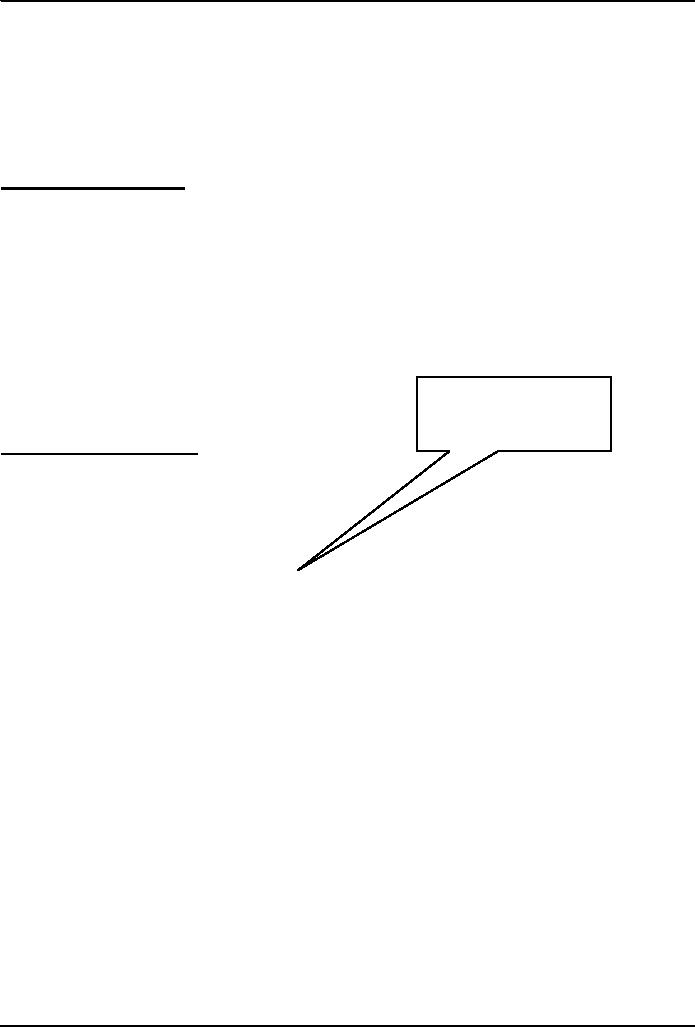
Introduction
to Computing CS101
VU
JavaScript
has numerous operators, classified in
many categories. We will look at
only a few of them
belonging
to the following categories:
Assignment
operators -- Arithmetic operators
Comparison
operators -- String operators
Logical
operators
We'll
look at a few more during
future lectures, but understand that
there are many more. Even
you text
book
does not cover all of
them!
Assignment
Operator "="
Changes
the value of what is on the
LHS, w.r.t. what is on the
RHS
total_number_of_students
= 984 ;
title
= "Understanding Computers" ;
swapFlag = false
;
x = y + 33
;
Arithmetic
Operators
Multiply
2 * 4 → 8
Divide
2 / 4 → 0.5
Modulus
5 % 2 → 1
Add 2
+ 4 →
6
Subtract 2 - 4
→
-2
Not the
same as the
Negate
-(5) → -5
assignment
"=" operator
21.4
Comparison Operators
The
"equal to (==)" Comparison
Operator
if (
today == "Sunday" )
document.write("The
shop is closed");
The
string "The shop is closed"
will be written to the document only if
the variable today has a
value
equal
to "Sunday"
Comparison
Operators
a == b
True if a and b are the
same
a !=
b
True
if a and b are not the
same
a>b
True
if a is greater than b
a >= b
True if a is greater than or equal
to b
a<b
True
if a is less than b
a <= b
True if a is less than or
equal to b
Example
if ( x != 0
)
result
= y / x;
else
result
= "not defined";
21.5
Logical
Operators
a && b
AND
True
if both are true
a || b OR
True of either or both are
true
!a
NOT
True
if a is false
The
"AND (&&)" Logical
Operator
if (
(pitch == "hard") && (bowler ==
"fast") )
myStatus =
"Pulled muscle";
The
value of the variable myStatus will be
set to "Pulled muscle" if
both of the conditions are
true
Example
137
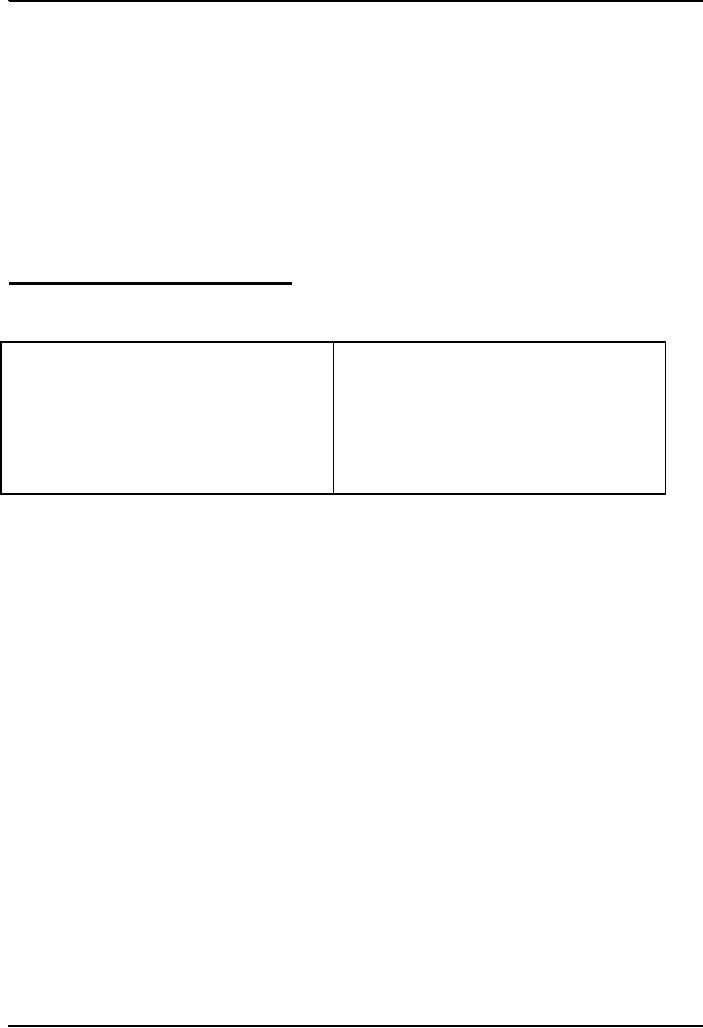
Introduction
to Computing CS101
VU
if ( x || y
)
document.write
("Either or both are
true");
else
document.write
("Both are false");
So
far we have looked at the assignment
operator, arithmetic operators, comparison operators
and
logical
operators
The
final category that we are
going to look at is string
operators
In
that category, we look at
only one, the concatenation
operator
The
"+" String
Operator
The
"+" operator can be used to concatenate
two strings
title
= "bhola" + "continental"
The
value of the variable title
becomes "bholacontinental"
21.6
Elements of JavaScript
Statements
Semicolon
;
Terminate
all JavaScript statements with a
semicolon. It is not always
necessary, but highly
recommended.
Identifiers
b =
2;
Operators
sum =
sum + 49;
Literals
name
= "Bhola" + " Continental";
Punctuation
x =
Math.floor ( x );
White
Spaces & Line Breaks
White
spaces: The space & the tab
characters
JavaScript ignores
any extra white spaces or
line breaks that you
put in the code
This
gives you the freedom of
using them for making your
code appear neat and
readable
while
( x > 0) {
remaind
= x % 2;
y =
remaind + y;
}
while
( x > 0) {remaind = x % 2; y = remaind +
y;}
while
( x > 0) {
remaind
= x % 2;
y =
remaind + y;
}
Now
let's talk about a very
special type of JavaScript statement that
does not really do anything,
but is
found
in most pieces of code!
Comments
Comments
are included on a Web page to
explain how and why you
wrote the page the way you
did
Comments
can help someone other
than the author to follow the
logic of the page in the
author's
absence
The
commented text is neither
displayed in the browser nor does it have
any effect on the
logical
performance of the
Web page, and is visible only
when the actual code is
viewed
JavaScript
Comments
Single-line
comments
(two options)
//
Author: Bhola
<!--
Creation Date: 24 March
2003
Multi-line
comments
/*
Author: Bhola
138

Introduction
to Computing CS101
VU
Creation
Date: 24 March 2003
*/
HTML
Comments
<!--
Author: Bhola
Creation
Date: 24 March 2003
-->
Note :
comments let the code speak
for itself!
Comments
add clarity
Decimal
to Binary Conversion in JavaScript
x = 75 ; // x is
the decimal number
y = "" ; // y is
the binary equivalent
while
( x > 0) {
remainder = x % 2
;
quotient
= Math.floor( x / 2 ) ;
y = remainder + y
;
x =
quotient ;
}
document.write("y
= " + y) ;
During
Today's Lesson ...
We
found out about JavaScript
data types
About
variables and literals
We
also discussed several operators supported by
JavaScript
Next
(the 8th) Web Dev
Lecture:
Flow
Control and Loops
To be
able to understand the concept of flow
control using the "if" and "switch"
structures
To be
able to understand the concept of behind
the "while" and "for" looping
structures
To be
able to solve simple problems
using flow control and loop
statements
139
Table of Contents:
- INTRODUCTION
- EVOLUTION OF COMPUTING
- World Wide Web, Web’s structure, genesis, its evolution
- Types of Computers, Components, Parts of Computers
- List of Parts of Computers
- Develop your Personal Web Page: HTML
- Microprocessor, Bus interface unit, Data & instruction cache memory, ALU
- Number systems, binary numbers, NOT, AND, OR and XOR logic operations
- structure of HTML tags, types of lists in web development
- COMPUTER SOFTWARE: Operating Systems, Device Drivers, Trialware
- Operating System: functions, components, types of operating systems
- Forms on Web pages, Components of Forms, building interactive Forms
- APPLICATION SOFTWARE: Scientific, engineering, graphics, Business, Productivity, Entertainment, Educational Software
- WORD PROCESSING: Common functions of word processors, desktop publishing
- Interactivity to Forms, JavaScript, server-side scripts
- ALGORITHMS
- ALGORITHMS: Pseudo code, Flowcharts
- JavaScript and client-side scripting, objects in JavaScript
- Low, High-Level, interpreted, compiled, structured & object-oriented programming languages
- Software Design and Development Methodologies
- DATA TYPES & OPERATORS
- SPREADSHEETS
- FLOW CONTROL & LOOPS
- DESIGN HEURISTICS. Rule of thumb learned through trial & error
- WEB DESIGN FOR USABILITY
- ARRAYS
- COMPUTER NETWORKS: types of networks, networking topologies and protocols
- THE INTERNET
- Variables: Local and Global Variables
- Internet Services: FTP, Telnet, Web, eMail, Instant messaging, VoIP
- DEVELOPING PRESENTATIONS: Effective Multimedia Presentations
- Event Handlers
- GRAPHICS & ANIMATION
- INTELLIGENT SYSTEMS: techniques for designing Artificial Intelligent Systems
- Mathematical Functions in JavaScript
- DATA MANAGEMENT
- DATABASE SOFTWARE: Data Security, Data Integrity, Integrity, Accessibility, DBMS
- String Manipulations:
- CYBER CRIME
- Social Implications of Computing
- IMAGES & ANIMATION
- THE COMPUTING PROFESSION
- THE FUTURE OF COMPUTING
- PROGRAMMING METHODOLOGY
- REVIEW & WRAP-UP of Introduction to Computing